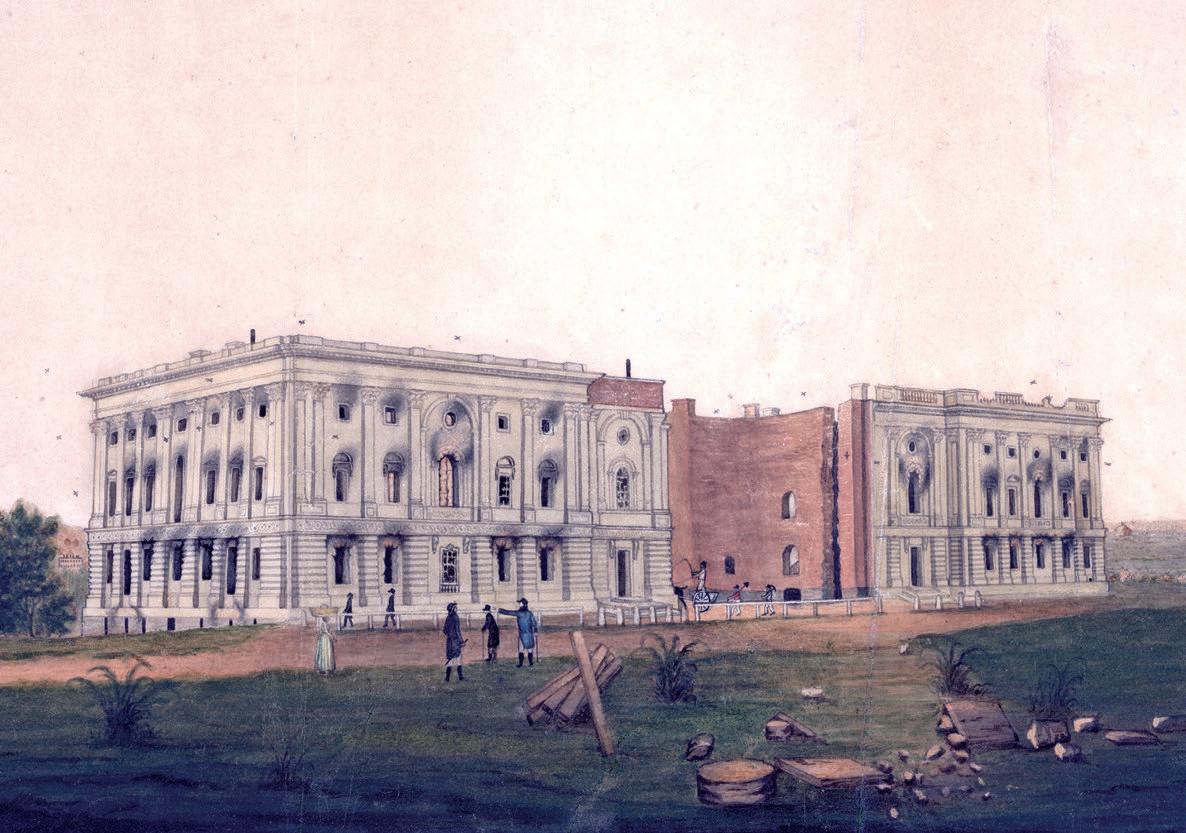
Yet Monroe spoke with pride about American accomplishments in his address. He also stressed the importance of international relations. He warned of dangers from abroad. He believed that European countries secretly hoped that the young democracy would fail. Then they could move in and carve up the rich territory. Monroe argued that the United States needed strong defenses and a ready military in case of attack. In addition, the country had to keep growing. It had to prove itself a powerful nation worthy of respect. "National honor is national property of the highest value," Monroe said.
The day after Monroe's inauguration, he appointed John Quincy Adams as secretary of State. Adams most recently had served as a U.S. senator from Massachusetts. He also had years of diplomatic experience, having served under every president beginning with George Washington. Adams's assertive foreign policy secured and expanded the borders of the United States from coast to coast.
First in a series of important treaties was the Rush-Bagot Agreement. American soldiers had tried to invade British North America (present-day Canada) during the War of 1812, and tensions had remained high along the border. Attorney General Richard Rush acted as Monroe's chief diplomat during the negotiations. He signed a disarmament treaty with British minister Charles Bagot in April 1817. It called for both sides to limit their navies on the Great Lakes. Congress ratified the treaty a year later. The agreement put the United States and Great Britain on friendlier footing.
This story is from the September 2023 edition of Cobblestone American History Magazine for Kids.
Start your 7-day Magzter GOLD free trial to access thousands of curated premium stories, and 9,000+ magazines and newspapers.
Already a subscriber ? Sign In
This story is from the September 2023 edition of Cobblestone American History Magazine for Kids.
Start your 7-day Magzter GOLD free trial to access thousands of curated premium stories, and 9,000+ magazines and newspapers.
Already a subscriber? Sign In

Putting the Pieces Together
Americans needed to begin to put the past behind them, come together, and plan for the future in the spring of 1865. But Abraham Lincoln, the man best equipped to lead them and who had hoped to restore the country as smoothly and peacefully as possible, had been assassinated.

LAST SHOTS
The last Confederate forces in the Civil War didn’t surrender in the spring of 1865 or on a battlefield.

AND IN OTHER 1865 NEWS
A group of African Americans stop at the White House’s annual public reception on January 1, where they shake hands with President Abraham Lincoln.

A Plot to Kill President the
For several months, actor John Wilkes Booth’s band of conspirators had plotted to capture President Abraham Lincoln and hold him hostage in exchange for Confederate prisoners.

Let the Thing Be Pressed
In June 1864, Union Lieutenant General Ulysses S. Grant began a nearly 10-month campaign in Virginia.

HEALING THE NATION
President Abraham Lincoln took the oath of office for the second time on March 4, 1865.

A Helping Hand
The spring season is hard in any agricultural society. Plants and animals are too small to eat.

WAR SHERMAN-STYLE
As far as Union Major General William T. Sherman was concerned, the Civil War had gone on long enough.

PEACE TALKS
The fall of Fort Fisher made clear that the Confederacy’s days were numbered. Southerners were tired and hungry.

FORT FISHER'S FALL
Outnumbered Confederate soldiers inside Fort Fisher were unable to withstand the approach of Union troops by land and the constant Union naval bombardment from the sea.